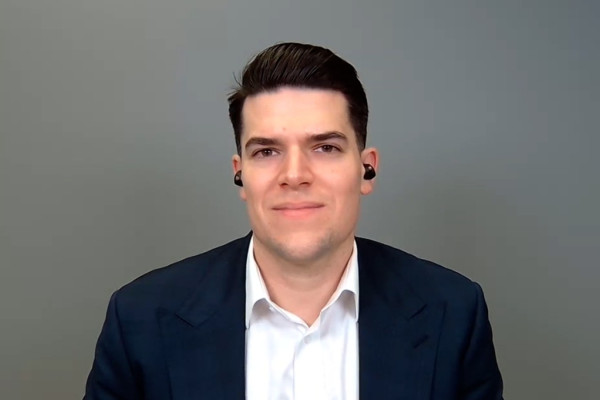Jarden and NAB to launch leading wealth advice and asset management business in New Zealand
Jarden and NAB have today signed an agreement to combine wealth advice and asset management businesses in New Zealand.
Leading Australian economist Warren Hogan has told a group of Jarden clients that while consensus is for a ‘V’-shaped recovery in Australia, a ‘W’-shaped downturn is more likely.
The UTS Industry Professor, former ANZ Chief Economist and Founder of micro advisory firm EQ Economics spoke to the firm on the financial risks and policy challenges facing Australia’s economic recovery, as part of the ongoing expert analysis Jarden provides for its clients.
Here are some of the key takeaways, including lessons we can apply to New Zealand.
1. Expect a ‘W’-shaped recovery, rather than a ‘V’ in the near term
Professor Hogan says a W-shaped recovery would be unique to Australia, although New Zealand was probably at risk of going down the same W-shaped economic path.
“In an international context they are facing a different problem – in the United States and Europe it’s not about W’s, it’s about elongated U’s.
“The resurgence that we are feeling in New Zealand and Australia is less prominent in other countries. We should expect a long, drawn-out downturn lasting a year or more, with a little pick up in the middle, but it’s important that we don’t mistake this for a genuine recovery.
2. Government stimulus has worked, but what’s next?
Professor Hogan says overwhelming stimulus has worked in the early stages of the pandemic, but policy challenges remain that the Australian Government will need to address, in order to reinvigorate a strong economic expansion. The same goes for New Zealand, and there will be mutual learnings based on how both governments react next.
“In Australia, the real risk is that there will be another wave of job losses when the JobKeeper wage subsidy ends. That is why the Government will be looking hard at what to do with the scheme, which it needs to keep while the situation in Australia is so uncertain but needs to get rid of to reinvigorate the private sector economy.
“Australia should expect to bounce back in Q3 but it is about maintaining momentum into 2021 and beyond, and I’m sceptical that will be as strong as we hope. We should expect to see a re-weakening in Australia’s W-shaped recovery in Q4, as JobKeeper is withdrawn.”
On JobKeeper, Professor Hogan suggests that the same criteria should remain in place, with tapering arrangements to enable businesses to wind out of the scheme, rather than a hard stop which would be more problematic.
3. Keep an eye on the banking system
Hogan says the banking system is the great uncertainty, with the focus now on business solvency and making sure that businesses don’t get squeezed by illiquidity.
“In Australia, there is an unquestionably strong banking capital position, but profits have taken a massive hit and we run the risk of business insolvency, which right now isn’t showing up but will once the repayment moratorium ends.
“The world has accumulated weak firms because of easy money and the implication right now is that we have a bigger pool of weak companies that could fail than we normally would.”
4. It’s a challenging global economic outlook
Professor Hogan says the global economic outlook is particularly challenging for Australia and New Zealand.
“We have a global environment characterised by the continued spread of the virus, with world trade forecast to fall more than it did in 2009, and with much more substantial economic ramifications.
“Both Australia and New Zealand are highly exposed internationally – reliant on tourism, goods exports and education - and a weak world economy is not going to help our recovery.
“Globalisation is in retreat, but more importantly the domestic political situation in many countries is deteriorating, which is also leading to populism and calls for greater economic sovereignty.”
5. Negative interest rates not the way to go
Hogan agrees with the Reserve Bank of Australia (RBA) that negative interest rates is a misguided and dangerous path to go down.
“The discussion around going beyond zero interest rates has a moral dimension. We can’t lose sight of the fact that economics is a social science and questions of morality arise. Negative interest rates take money from savers who are working towards important life goals such as a deposit for a house or retirement.”
There is little evidence that negative rates work in practise. Commercial banks do not post negative rates on retail savings or deposit accounts because they know that they will lose customers. The real risk is that negative rates risk pushing money out of the system i.e. people buying gold, cryptocurrencies or holding high denomination bank notes. This activity is not regulated and is not available to fund investment.
“The worst outcome for a debt-encumbered economy would be inflation and higher interest rates. If we have anything other than a glacial upward movement, that won’t be good. I don’t see capacity for the end consumer to be able to tolerate inflation, therefore businesses won’t go down this path. Higher inflation remains a low risk at this stage.”
6. High hopes for the housing market
Hogan said the Australian housing market has surprisingly bounced back really well, but that the immediate risk in the next six months will be the large number of mortgages in moratorium (about 30 per cent). What happens to those mortgages when repayment re-commences is critical for the housing market, particularly the investor market.
“Equities are overvalued like we’ve never seen before. If this persists then demand for property is going to be huge.
“If unemployment hits 10 per cent but the economy then recovers into 2022/23, property should hold up fine and prices will start to go back up again.
“At the moment the risk is in the investor market, so we should be watching investors at the end of the year to see how they respond to the end of moratoria.”
7. Supply chain resilience
Hogan says when the pandemic struck, we found out how skinny our supply chains really are, with the cost of components (packaging, raw ingredients etc.) going through the roof.
“Going forward the risk is that we could be cut out of some supply chains, but I’m not overly concerned. In Australia and New Zealand, we have stuff that people want – energy, natural gas, food - and we shouldn’t lose sight of that.
“What we should expect to see is some inefficiency and deglobalisation, with a shift to some more domestic production. Even in New Zealand and Australia, we won’t want to be as reliant outside of our own borders for certain essential items going forward.”
Hogan is heartened to see Australia talking with its neighbours in Asia, including Japan and India.
In a recent NZ Herald op-ed, Jarden CEO James Lee commented that broader coordination amongst regional neighbours is a sensible way forward.
All media enquiries, please contact:
Jill Valentine | M. +61 416 189 554 | [email protected]
Jarden and NAB have today signed an agreement to combine wealth advice and asset management businesses in New Zealand.

Reaching our goal three years ahead of target In 2016, Jarden set the ambitious goal of quadrupling the business by 2026.

A slowdown in consumer spending or economic growth is nowhere to be seen in Australia, despite its Reserve Bank increasing the cash rate to its highest level in seven years…
Loading form...